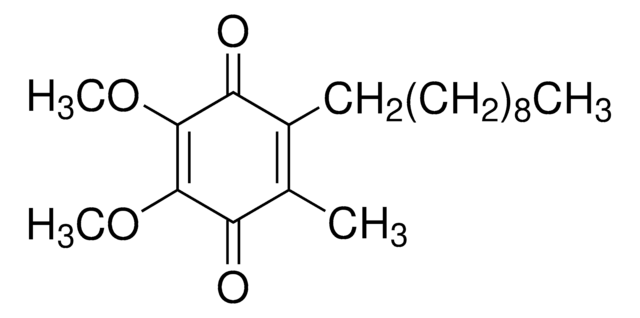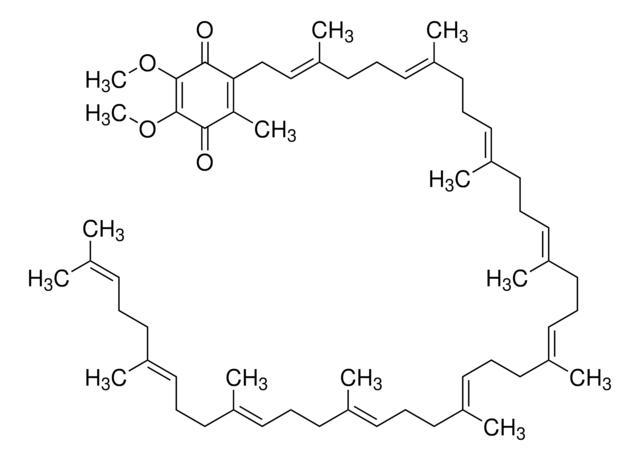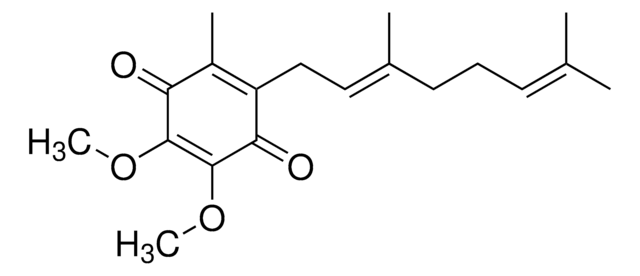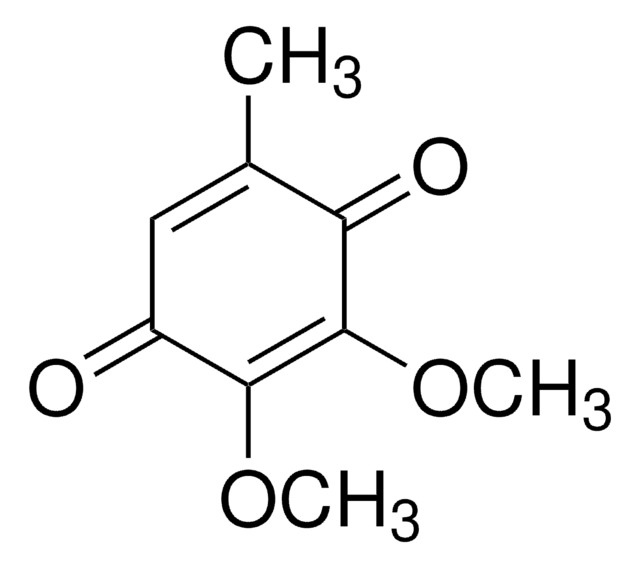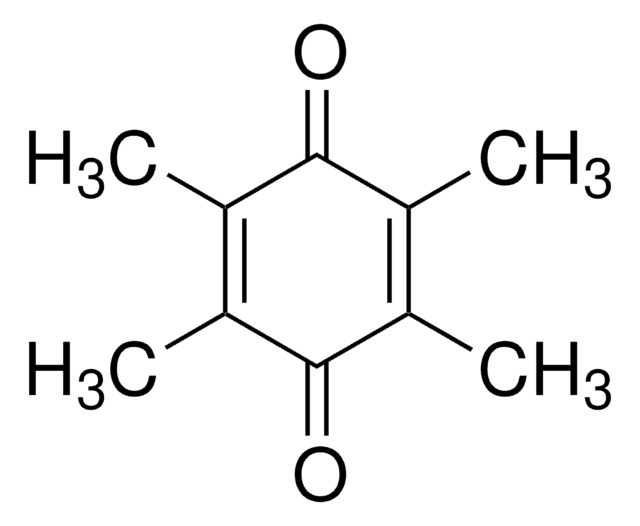C7956
Coenzyme Q1
≥95%
Synonyme(s) :
2,3-Dimethoxy-5-methyl-6-(3-methyl-2-butenyl)-1,4-benzoquinone, Ubiquinone-1, Ubiquinone-5
About This Item
Produits recommandés
Niveau de qualité
Essai
≥95%
Forme
liquid
Température de stockage
−20°C
Chaîne SMILES
COC1=C(OC)C(=O)C(C\C=C(\C)C)=C(C)C1=O
InChI
1S/C14H18O4/c1-8(2)6-7-10-9(3)11(15)13(17-4)14(18-5)12(10)16/h6H,7H2,1-5H3
Clé InChI
SOECUQMRSRVZQQ-UHFFFAOYSA-N
Description générale
Application
Actions biochimiques/physiologiques
Autres remarques
Code de la classe de stockage
10 - Combustible liquids
Classe de danger pour l'eau (WGK)
WGK 3
Point d'éclair (°F)
Not applicable
Point d'éclair (°C)
Not applicable
Équipement de protection individuelle
Eyeshields, Gloves, multi-purpose combination respirator cartridge (US)
Faites votre choix parmi les versions les plus récentes :
Déjà en possession de ce produit ?
Retrouvez la documentation relative aux produits que vous avez récemment achetés dans la Bibliothèque de documents.
Les clients ont également consulté
Articles
Learn about the four membrane-bound protein complexes that make up the electron transport chain metabolic pathway supplying energy as ATP for cellular respiration.
Notre équipe de scientifiques dispose d'une expérience dans tous les secteurs de la recherche, notamment en sciences de la vie, science des matériaux, synthèse chimique, chromatographie, analyse et dans de nombreux autres domaines..
Contacter notre Service technique